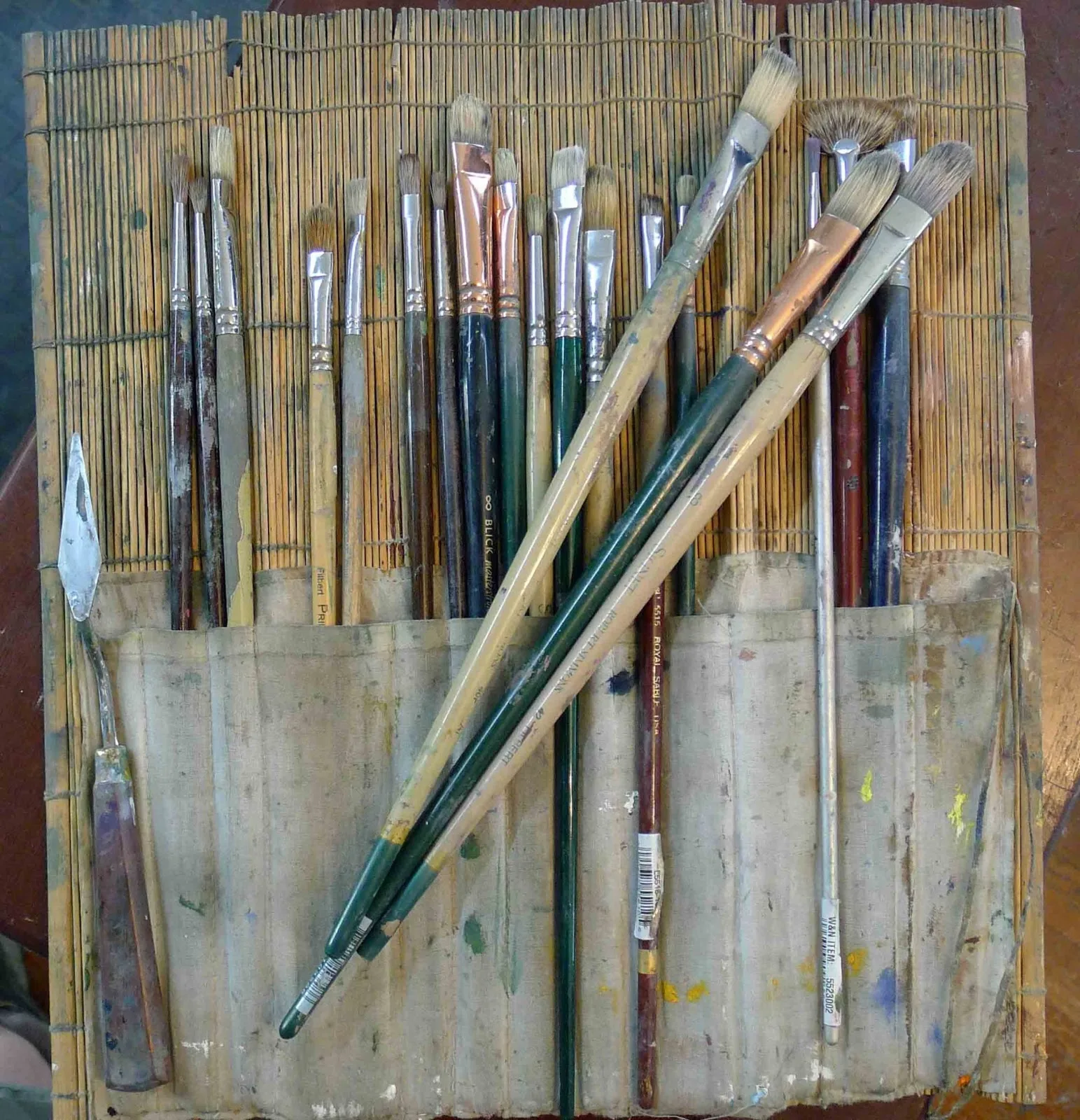While you can paint a good oil painting with a stick (if you know how), decent brushes certainly help.
 |
| They used to be my first-string brushes, until some kindly friends staged an intervention. |
A few months ago, a student in my Zoom class asked me to check a brush for him. He held it up to the camera.
“Shot. Toss it,” I said.
“How about this one?”
“Total c--p. Toss it.”
“This one?”
“It’s a stub! You can’t paint with a stub!”
 |
| A taklon wash brush can be the watercolorist's best friend. |
After more of this than I ever expected, we came up with some ground rules for assessing brushes. While watercolor brushes will last forever if you care for them properly, oil painting brushes do wear out. You can’t paint with a brush that’s:
- Hardened with paint;
- Splayed (because it has paint dried in the ferrule);
- Developed a wicked curve (either a manufacturing problem or because it’s sat in solvent);
- Worn to the point of having no flexible fibers left;
- Missing chunks of hair.
I’ve puttered endlessly trying to revitalize hardened, splayed or curved brushes, and its simply not worth the effort. Pitch them.
 |
| In a pinch, I've found that coconut oil can soften hardening oil brushes. But in most cases, it's not worth trying. |
Most of us need fewer brushes than we think, but the difficulty lies in knowing which brushes are appropriate. There is no one-size-fits-all answer. The first question is what fiber is appropriate.
- For alla prima oil painting, hog bristle brushes (synthetics are generally too soft for stiff paint);
- For indirect oil painting, synthetic or sable along with hog bristle;
- For acrylic painting, either hog bristle or synthetic brushes, because acrylic paint is softer than oil paint;
- For watercolor painting, sable or synthetic, including taklon. (It’s too early in the morning for me to consider plucking squirrels. Sorry.)
 |
| You can waste a lot of money in the discount bins at art stores. |
There is very little application for tiny brushes in painting unless you’re a miniaturist. In watercolor, a ½” flat, a 1” wash brush, a #6 quill and a #8 round are enough to get you started. Add a set of short synthetic flats (or mottlers, as they’re sometimes called) in ¾”, 1” and 1½”. A little pointed brush to sign your name is helpful.
In oils and acrylics, a life list would include:
- Brights (short flats) in 6, 8, 10, possibly 12, depending on how big you’re going to paint;
- Rounds: 2, 4, 6;
- Long (true) flats: 3, 4, 5;
- Filbert: 2, 4, 6;
- A few tiny rounds in sable for detail and to sign your name: 2,4;
- 1” badger blender brush;
- 2” spalter or hog bristle background brush—this is for blocking.
I generally recommend Princeton brushes to students; they come in a range of quality and material and are good value for money. I’m currently painting with Rosemary & Co. in both watercolor and oils. Other brushes I’ve known and loved include Isabey, and Winsor & Newton. But brushes are a highly-personal thing, and you’re best buying one or two from a maker and running them through their paces before you commit to a relationship.
The best brushes in the world will do you no good if you abuse them. My daughter makes me castile soap, which cleans my oil brushes beautifully. You can buy it in the laundry section of your grocery store. Saddle soap and conditioning brush soap are also excellent products. The important thing is to clean your brushes as soon as you finish a painting session.
Watercolor brushes need nothing more than a good rinse in tepid water. Shake dry and gently reshape the bristles.
All brushes will be ruined if they’re allowed to stand in solvent or water. That’s a terrible habit, so don’t let it develop. Swish them free of solvents and set them down on a paper-towel or in a brush holder.

